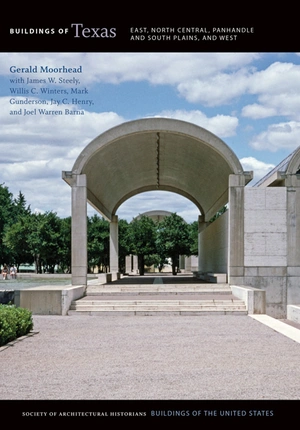
Lubbock High School was designed by W. L. Bradshaw, who graduated from Texas A&M College in 1924 and joined Noah L. Peters and William T. Strange Jr. as their principal designer in 1928. It was built to accommodate 1,200 students (Lubbock’s population quintupled during the decade of the 1920s) with an auditorium seating 1,800. In part influenced by the Spanish Renaissance architecture of Texas Tech University, this complex is richer in its eclectic sources, incorporating Spanish Romanesque in the brick detail and tile roofs, Lombard Romanesque in the pilaster strips and arcaded corbel tables, and Mudéjar in the horseshoe-shaped pointed arches at the main entrance. Although the plan is symmetrical about the central auditorium, an offset campanile at the entrance adds a picturesque note. The auditorium in the building’s center is joined to classroom wings by arcaded passages, which define two interior patios, one of which was developed as an area for theatrical events. The wing to the east was added in 1942, and the block east of that opposite Avenue T dates to 2013.

